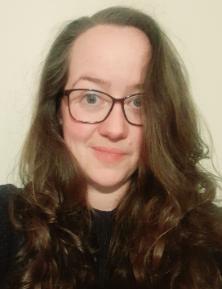Dr Laura Clark

Royal Society University Research Fellow
Email: laura.a.clark@york.ac.uk
Areas of Expertise:
-
- (Scanning) Transmission Electron Microscopy
-
- Ptychography and Differential Phase Contrast imaging
-
- Image simulations for (S)TEM
-
- Beam shaping and aperture design
-
- Low-dose imaging for beam sensitive materials, modelling and analyses
- Fourier optics analysis
Biography
Biography
I am a Royal Society University Research Fellow in the School of Physics, Engineering and Technology at the University of York. My research focuses on technique development to improve the imaging capabilities of (scanning) transmission electron microscopes.
I currently hold committee roles within both the Institute of Physics Electron Microscopy and Analysis Group (IOP-EMAG) and the Royal Microscopical Society (RMS). Supporting my collaborations with other research groups, I also hold visiting researcher positions at the University of Oxford (Materials department), the University of Leeds (Chemical Engineering department) and the electron Physical Science Imaging Centre (ePSIC) at the Diamond facility in Harwell.
Having completed my undergraduate and MSc degrees here in York, I moved to the EMAT laboratory at the University of Antwerp (Belgium) to undertake my PhD research, developing beam shaping techniques in the (S)TEM. I then moved to Monash University (Australia) to work with Scott Findlay on phase-contrast methods. Returning to the UK via a couple of short-term positions (including working with the Nellist and Kirkland groups at Oxford Materials), I held a Marie Skłodowska-Curie fellowship (2020-2022) as part of the LEMAS group at the University of Leeds before taking up my Royal Society University Research Fellowship at York in November 2022.
